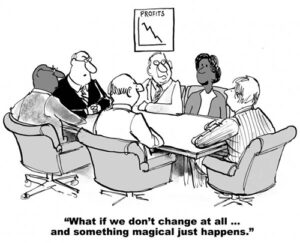By Sherif Attar
In a world of ever-changing ambiguity and uncertainty, executives have to face two challenges: excellent performance and people development. Where many managers think those endeavours are “competing”, this author believes they are “completing”. GET DOWN TO BUSINESS argues.
As the Covid-19 crisis enters its third year and the Omicron variant surges, organisations around the world are contemplating how, when, and even if to have their knowledge workers resume regular in-office hours. And they do so at a time when the views and priorities of their employees have shifted. A recent McKinsey study showed that well-being, flexibility, and work-life balance are top of mind. A survey Microsoft conducted last year indicated that 41 per cent of the global workforce would consider switching jobs in the next year, with 55 per cent noting that work environment would play a role in their decisions.
The pandemic raised the stakes for companies looking to retain top-tier employees and build thriving cultures.
Here are some recommendations for how organisations can implement both small and large-scale changes in enticing people to return to in-person work,.

Ask what the space is for,
name it accordingly
It might sound simple, but the office should be a place for collaboration, creativity, and learning, where an employee feels nurtured and a sense of belonging. Names of buildings, floors, areas, or rooms should reflect this intent. Terms like “learning centre” or “innovation space” communicate the new perspective, shape design changes, attract talent, and influence behavior.
Cutting-edge tech companies like Facebook and Google have “campuses” for the same reason; they want their engineers to experiment just as they did when they were students. Even UPS recently renamed its corporate headquarters building – from the Plaza to Casey Hall to emphasise a more warm, inviting, collaborative environment.
Listen to what your employees
want, need
Think of Covid-19 as a catalyst to talk about what the best employees want from their workplaces, even if you can’t execute on every idea. For most organisations, reverting to the status quo won’t be an option. People will expect more flexibility, better technology, and incentives to come to the office, and companies must heed that call.
Experiment within your own organisation
Some companies will create a new headquarters post-pandemic. But most can design a more thoughtful office environment. To start exploring ideas for your own organisation, our recommendation is to start small. Repurpose conference rooms, invest in a new teaming table, or refurbish a floor instead of an entire building. You might also incorporate multimedia technology to bring people together and breathe new life into your office.
Many companies have invested in smart hybrid meeting technology as well. Look also for multi-use opportunities. For example, the circuitous indoor/outdoor ramps that stretch from the bottom to the top of the building can be used for one-on-one walking meetings, individual exercise, or social breaks in nature and fresh air. Finally, be sure to focus on safety and sustainability by following healthy building guidelines.
Activate partnerships based on insights
For younger knowledge workers, the office is as much a place to learn and socialise as it is a place to meet deadlines. Nearly 60 per cent of Millennials report that opportunities to discover new insights are extremely important to them when applying for a job, and they may also stay longer at a company if they get involved in social causes.
Activities like yoga or meditation, community service, or continuing education are a good place to start. Even small initiatives like a hanging work from local or student artists in rotation, canned food drives in the lobby, or pop-up food trucks outside can fuel employees’ sense of purpose.
Conclusion
The workplace trends that accelerated and employee preferences that crystallised during the pandemic aren’t going away. We urge corporations to use this moment to think about how they can improve work environments in a way that boosts employee engagement and well-being, thereby encouraging attendance, increasing retention, and attracting new talent. Now is the time to act.
For questions or suggestions, please send your comments.
Sherif Attar, an independent management consultant/trainer and organisation development authority, delivers seminars in the US, Europe, Middle East and the Far East.


















































Discussion about this post